
Comparison of aroma active and sulfur volatiles in three fragrant rice cultivars using GC–Olfactometry and GC–PFPD (2014)
Researcher : Kanjana Mahattanatawee*, Russell L. Rouseff
Department : *Food Technology Department, Faculty of Science, Siam University
E-mail : *kanjana@siam.edu
Abstract : Aroma volatiles from three cooked fragrant rice types (Jasmine, Basmati and Jasmati) were characterised and identified using SPME GC–O, GC–PFPD and confirmed using GC–MS. A total of 26, 23, and 22 aroma active volatiles were observed in Jasmine, Basmati and Jasmati cooked rice samples. 2-Acetyl-1-pyrroline was aroma active in all three rice types, but the sulphur-based, cooked rice character impact volatile, 2-acetyl-2-thiazoline was aroma active only in Jasmine rice. Five additional sulphur volatiles were found to have aroma activity: dimethyl sulphide, 3-methyl-2-butene-1-thiol, 2-methyl-3-furanthiol, dimethyl trisulphide, and methional. Other newly-reported aroma active rice volatiles were geranyl acetate, β-damascone, β-damascenone, and ɑ-ionone, contributing nutty, sweet floral attributes to the aroma of cooked aromatic rice. The first two principal components from the principal component analysis of sulphur volatiles explained 60% of the variance. PC1 separated Basmati from the other two cultivars and PC2 completely separated Jasmine from Jasmati cultivars.
Keywords: PCA, Cooked rice, Headspace SPME
Link to Publication: Food Chemistry/ in Sopus
Bibliography : Mahattanatawee, K., & Rouseff, R. L.(2014). Comparison of aroma active and sulfur volatiles in three fragrant rice cultivars using GC–Olfactometry and GC–PFPD. Food Chemistry, 154, 1-6.
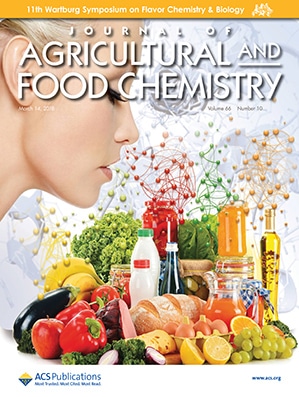
Comparison of Aroma Character Impact Volatiles of Thummong Leaves (Litsea petiolata Hook. f.), Mangdana Water Beetle (Lethocerus indicus), and a Commercial Product as Flavoring Agents in Thai Traditional Cooking (2018)
Researcher : Kanjana Mahattanatawee, Torsak Luanphaisarnnont, Russell Rouseff
Department : Food Technology Department, Faculty of Science, Siam University
E-mail : kanjana@siam.edu
Abstract : Thummong (Litsea petiolata Hook. f.) is a tree native to southern Thailand. The leaves of this tree are highly aromatic and used to flavor Thai dishes in place of the traditional water beetle Mangdana (Lethocerus indicus) for religious and cultural reasons. Total and aroma-active volatiles from both flavoring materials were compared using gas chromatography–olfactory (GC–O) and gas chromatography–mass spectrometry (GC–MS). The volatiles from Thummong leaves and the Mangdana water beetle were collected and concentrated using headspace solid-phase microextraction. A total of 23 and 25 aroma-active volatiles were identified in Thummong leaves and Mangdana, respectively. The major aroma-active volatiles in Thummong leaves consisted of 7 aldehydes, 5 ketones, and 3 esters. In contrast, the aroma-active volatiles in the water beetle consisted of 11 aldehydes, 3 esters, and 2 ketones. Both had (E)-2-nonenal as the most intense aroma-active volatile. The water beetle character impact volatile (E)-2-hexenyl acetate was absent in the leaves, but its aroma character was mimicked by 11-dodecen-2-one in the leaves, which was absent in the beetle. In addition, a commercial Mangdana flavoring was examined using GC–O and GC–MS and found to contain only a single aroma-active volatile, hexyl acetate. All three flavoring sources exhibited similar aroma characteristics but were produced from profoundly different aroma-active volatiles.
Link to Publication: Journal of Agricultural and Food Chemistry, Vol.66 Issue 10 March 2018
Bibliography : Mahattanatawee, K., Luanphaisarnnont, T., & Rouseff R. (2018). Comparison of aroma character impact volatiles of thummong leaves (litsea petiolata hook. f.), Mangdana water beetle (lethocerus indicus), and a commercial product as flavoring agents in Thai traditional cooking. Journal of Agricultural and Food Chemistry, 66(10), 2480-2484.

Improving the Flavor of Soy Ice Cream by Adding Lemongrass or Pandan Leaf Extracts (2014)
Title : Improving the Flavor of Soy Ice Cream by Adding Lemongrass or Pandan Leaf Extracts
Researcher : Sirinat Natisri, Kanjana Mahattanatawee*, Siwatt Thaiudom
Department : *Food Technology Department, Faculty of Science, Siam University
E-mail : *kanjana@siam.edu
Abstract : Lemongrass or pandan leaf extracts were used separately to improve the flavor of soy ice cream. Lemongrass or pandan leaf extracts with water in concentrations of 10: 100, 15: 100, and 20: 100 w/w were examined using sensory evaluation for the best flavor acceptance. The best ratio was selected to spray dry using maltodextrin as the drying medium at various concentrations (2, 4, 6, 8 and 10% w/w). A ranking preference test was used to determine the flavor of the soy ice cream. Threshold testing was used to determine the sensorial quality of soy isolate protein mixed with both herb extracts, and soy ice cream mixed with both herb extracts. The flavor compound was analyzed by using headspace, solid-phase microextraction, gas chromatography, mass spectrophotometry (HSSPME-GC-MS). The best concentration of fresh lemongrass or pandan leaf extracts for improving the sensorial flavor of soy ice cream was 10: 100 (w/w). The optimum quantity of maltodextrin for spray drying was 2%(w/w). The threshold values of fresh and powdered lemongrass extracts that could mask the beany flavor in soy protein isolate solution and soy ice cream were lower than those of fresh and powdered pandan leaf extracts. The beany flavor in soy protein isolate solution and soy ice cream was mainly composed of hexanal, pentanal, benzaldehyde, 2-pentyl-furan and 1-octen-3-ol. The flavor compounds in pandan leaf extract were 2-acetyl-1-pyroline and 3-methyl-2 (5H)-furanone, while those of lemongrass extract were β-myrcene, α-pinene, 3-carene, neral, geranial and geraniol. From the results of HS-SPME-GC-MS, the beany flavor was masked by these extracts. This indicated that lemongrass and pandan leaf extracts could mask the beany flavor and improve the sensorial quality of soy ice cream.
Keywords: Ice cream, Lemongrass, Pandan leaf, Beany flavor, Headspace, Solidphase microextraction, Gas-chromatography, Mass spectrophotometry
Link to Publication: CHIANG MAI UNIVERSITY JOURNAL OF NATURAL SCIENCES/Natural and Life Sciences Communications Volume 13, Issue 01(S) DECEMBER 2014
Bibliography : Natisri, S., Mahattanatawee, K., & Thaiudom, S. (2014). Improving the flavor of soy ice cream by adding lemongrass or Pandan leaf extracts. Chiang Mai University Journal of Natural Sciences, 13(1 s), 469-482.
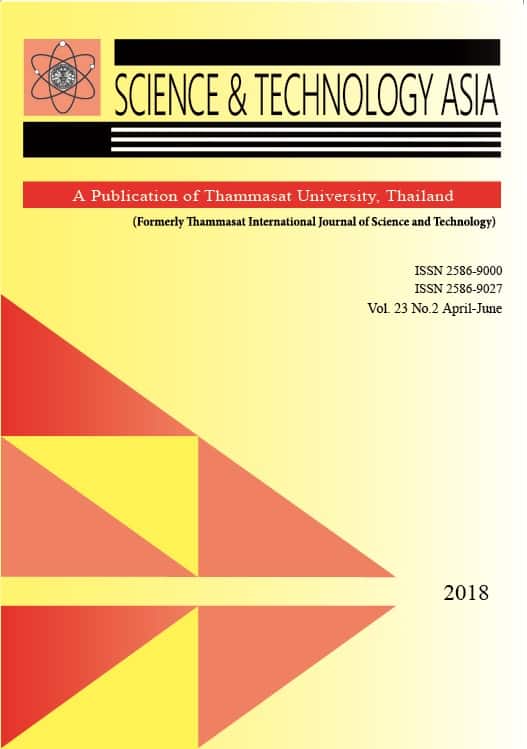
Influence of Whey Protein on Stability of α-Mangostin Entrapped in Alginate/Whey Protein Beads (2018)
Title : Influence of Whey Protein on Stability of α-Mangostin Entrapped in Alginate/Whey Protein Beads
Researcher : Tunyaporn Sirilert, Nattapol Kajonboon and Nattiga Silalai *
Department : ภาควิชาเทคโนโลยีการอาหาร คณะวิทยาศาสตร์ มหาวิทยาลัยสยาม
E-mail : *ผู้ประสานงานหลัก: tunyapornfood@gmail.com
ฐานข้อมูลงานวิจัย มหาวิทยาลัยสยาม : https://e-research.siam.edu/kb/influence-of-whey-protein-on-stability/
Link to article: Science & Technology Asia, 23(2), 29–36. https://ph02.tci-thaijo.org/index.php/SciTechAsia/article/view/131198
Journal : Science & Technology Asia / in Scopus
Bibliography : Sirilert, T., Kajonboon, N., & Silalai, N. (2018). Influence of Whey Protein on Stability of α-Mangostin Entrapped in Alginate/Whey Protein Beads. Science & Technology Asia, 23(2), 29–36. https://ph02.tci-thaijo.org/index.php/SciTechAsia/article/view/131198
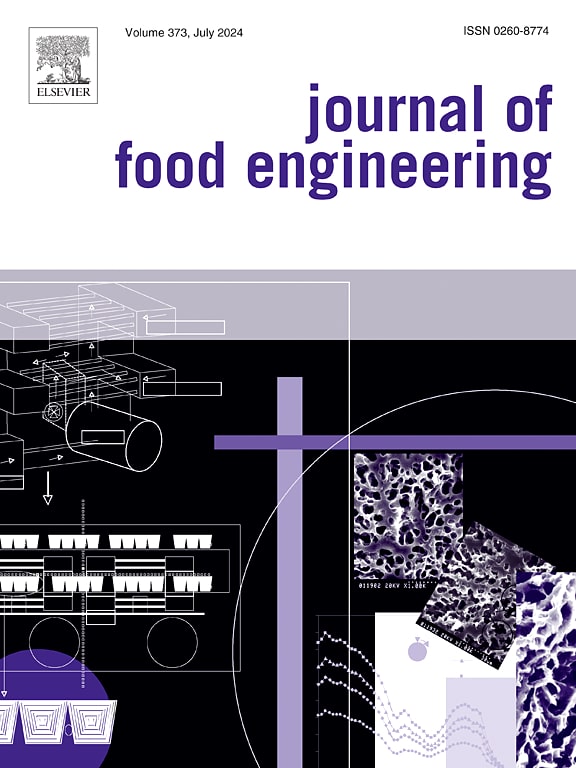
Role of solids composition on α-relaxation behavior, molecular structure and stability of spray-dried xanthones encapsulation systems around glass transition (2016)
Title : Role of solids composition on α-relaxation behavior, molecular structure and stability of spray-dried xanthones encapsulation systems around glass transition
Researcher : Tunyaporn Sirilert, Nattapol Kajonboon and Nattiga Silalai *
Department : ภาควิชาเทคโนโลยีการอาหาร คณะวิทยาศาสตร์ มหาวิทยาลัยสยาม
E-mail : *ผู้ประสานงานหลัก: tunyapornfood@gmail.com
ฐานข้อมูลงานวิจัย มหาวิทยาลัยสยาม : –
Link to article: Journal of Food Engineering Volume 174, April 2016, Pages 85-91 https://doi.org/10.1016/j.jfoodeng.2015.11.022
Journal : Journal of Food Engineering / in Scopus
Bibliography : Silalai, N., Sirilert, T., Roos, Y. H., Potes, N., & Devahastin, S. (2016). Role of solids composition on α-relaxation behavior, molecular structure and stability of spray-dried xanthones encapsulation systems around glass transition. Journal of Food Engineering, 174, 85-91. https://doi.org/10.1016/j.jfoodeng.2015.11.022
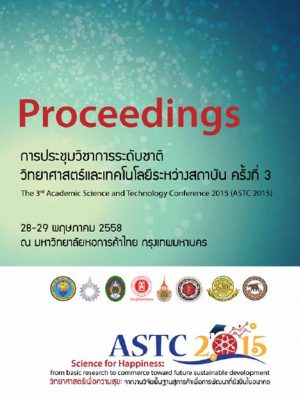
การคัดแยกและลักษณะสัณฐานวิทยาของแบคทีเรียชอบเกลือและเจริญเติบโตได้ดีที่อุณหภูมิสูง จากน้ำปลาโซเดียมต่ำ
Title : การคัดแยกและลักษณะสัณฐานวิทยาของแบคทีเรียชอบเกลือและเจริญเติบโตได้ดีที่อุณหภูมิสูง จากน้ำปลาโซเดียมต่ำ : Screening and Morphology Characterization of Thermophilic and Halophilic Bacteria from Low Sodium Fish Sauce
Researcher : ศุภณัฐ หวังรุ่งเรืองกิจ, พชรวัฒน์ ดิลกพัฒน์วานิช, อำพรรณ ชัยกุลเสรีวัฒน์* และ ณฐมล จินดาพรรณ
Suppanat Hwangrungruangkij, Pacharawat Dilokpatwanich, Ampun Chaikulsareewath* and Nathamol Chindapan
Department : ภาควิชาเทคโนโลยีการอาหาร คณะวิทยาศาสตร์ มหาวิทยาลัยสยาม
E-mail : *ผู้ประสานงานหลัก: ampun.cha@siam.edu
บทคัดย่อ : ในกระบวนการผลิตน้ำปลาโซเดียมต่ำด้วยวิธีการแยกสารผ่านด้วยเยื่อไฟฟ้าระดับห้องปฏิบัติการ มีความจำเป็นต้องให้ความร้อนกับน้ำปลาโซเดียมต่ำที่อุณหภูมิ 100 องศาเซลเซียส เป็นเวลา 10 นาทีเพื่อทำลายจุลินทรีย์ที่ปนเปื้อนในระหว่างกระบวนการกำจัดเกลือ ก่อนการบรรจุขณะร้อนในภาชนะปิดสนิท เพื่อให้ได้ผลิตภัณฑ์ที่สามารถเก็บรักษาได้ที่อุณหภูมิห้อง อย่างไรก็ตามหากต้องการผลิตในเชิงการค้า จำเป็นต้องทราบชนิดและการต้านทานความร้อนของแบคทีเรียที่จะใช้เป็นดัชนีกำหนดกระบวนการฆ่าเชื้อที่ถูกต้อง ดังนั้นงานวิจัยนี้จึงมี วัตถุประสงค์เพื่อศึกษาการคัดแยกและแสดงลักษณะสัณฐานวิทยาเบื้องต้นของแบคทีเรียชอบเกลือและเจริญได้ดีที่อุณหภูมิสูงจากน้ำปลาโซเดียมต่ำรวมทั้งศึกษาการต้านทานความร้อนของแบคทีเรียที่คัดแยกได้ โดยทดลองให้ความร้อนแก่น้้ำปลาโซเดียมต่ำที่อุณหภูมิ 90 องศา
เซลเซียส เป็นเวลา 25 นาที จากนั้นนำมาคัดแยกแบคทีเรียด้วยวิธี Pour plate บนอาหารแข็ง Plate Count Agar (PCA) ซึ่งเติมเกลือให้มีความเข้มข้นร้อยละ 3, 5, 14 และ 18 และบ่มที่อุณหภูมิ 55 องศาเซลเซียส เป็นเวลา 24-48 ชั่วโมง จากการทดลองพบโคโลนีเดี่ยวของแบคทีเรียแตกต่างกัน 3 สายพันธุ์ เจริญได้บนจานเพาะเชื้อ PCA ที่เติมเกลือความเข้มข้นร้อยละ 3 เท่านั้น เมื่อนำมาศึกษาลักษณะสัณฐานวิทยาโดยวิธีการย้อมสีแบบแกรมและย้อมสีเอนโดสปอร์ พบว่าแบคทีเรียทั้ง 3 สายพันธุ์ ติดสีแกรมบวก มีลักษณะท่อน และสามารถสร้างเอนโดสปอร์ได้ นอกจากนี้พบว่าแบคทีเรียชนิดหนึ่งมีค่า D75 , D85 และ D95 เท่ากับ 34.38, 27.03 และ 11.19 ตามลำดับ และมีค่า Z เท่ากับ 40.98
คําสําคัญ : น้ำปลาโซเดียมต่ำ แบคทีเรียชอบเกลือ แบคทีเรียเจริญเติบโตได้ดีที่อุณหภูมิสูง
Abstract : In low-sodium fish sauce production using electrodialysis (ED) in the laboratory-scale, it is necessary to heat the lowsodium fish sauce at temperature 100o C for 10 minute, to destroy microorganism contamination during ED desalination before hot filling in a sealed container, to obtain the shelf stable low-sodium fish sauce. However, if scale-up to the commercial production, it should to know a type and thermal resistance of bacteria used as index for processing establishment.The objective of this research was to study screening and morphology characterization of thermophilic halophilic bacteria from low-sodium fish sauce, and their thermal resistance was also investigated. The low-sodium fish sauce was heated at temperature 90o C for 25 minute. The bacteria were then isolated from the heated low-sodium fish sauce by pour plate on plate count agar (PCA) with salt concentration of 3%, 5%, 14% and 18%, and incubated at temperature 55 o C for 24-48 hour. The result showed that bacteria only grow in PCA with 3% salt concentration, which could be identified in three different single colony of bacteria. Studying morphology of isolated bacteria by Gram staining and endospore staining, they were Gram-positive bacteria, had rod shape and endospore. Moreover, D75 D85 D95 values of one bacteria were equal to 34.38, 27.03 and 11.19 respectively and Z-Value was equal to 40.98.
Keywords : Low sodium fish sauce, Halophilic bacteria, Thermophilic bacteria
Proceeding : รายงานการประชุม การประชุมวิชาการระดับชาติ วิทยาศาสตร์และเทคโนโลยีระหว่างสถาบัน ครั้งที่ 3 ASTC 2015: The 3rd Academic Science and Technology Conference 2015 “วิทยาศาสตร์เพื่อความสุข: จากงานวิจัยพื้นฐานสู่การค้าเพื่อการพัฒนาที่ยั่งยืนในอนาคต” (Science for Happiness: from basic research to commerce toward future sustainable development) วันพฤหัสบดีที่ ๒๘- วันศุกร์ที่ ๒๙ พฤษภาคม ๒๕๕๘ ณ มหาวิทยาลัยหอการค้าไทย กรุงเทพมหานคร ผู้จัดหลัก: คณะวิทยาศาตร์และเทคโนโลยี มหาวิทยาลัยหอการค้าไทย คณะวิทยาศาสตร์และเทคโนโลยี และ คณะเทคโนโลยีการเกษตร มหาวิทยาลัยราชภัฏวไลยอลงกรณ์ ในพระบรมราชูปถัมภ์
Link to Proceeding: https://www.astcconference.com/page/proceedings#astc-content
Bibliography : ศุภณัฐ หวังรุ่งเรืองกิจ, พชรวัฒน์ ดิลกพัฒน์วานิช, อำพรรณ ชัยกุลเสรีวัฒน์ และ ณฐมล จินดาพรรณ. (2558). การคัดแยกและลักษณะสัณฐานวิทยาของแบคทีเรียชอบเกลือและเจริญเติบโตได้ดีที่อุณหภูมิสูง จากน้ำปลาโซเดียมต่ำ. ใน รายงานการประชุม การประชุมวิชาการระดับชาติ วิทยาศาสตร์และเทคโนโลยีระหว่างสถาบัน ครั้งที่ 3 “วิทยาศาสตร์เพื่อความสุข: จากงานวิจัยพื้นฐานสู่การค้าเพื่อการพัฒนาที่ยั่งยืนในอนาคต” (หน้า 487-493). กรุงเทพฯ: มหาวิทยาลัยหอการค้าไทย.
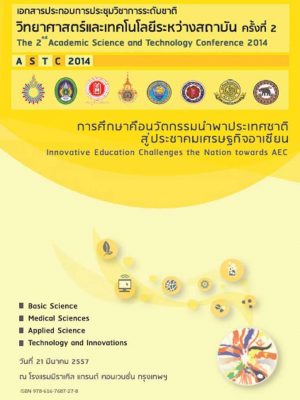
การวิเคราะห์ป ัจจัยในการเรียนวิชาเคมีอาหาร และการใช้บัตรคําและวิดีทัศน์ต่อ ผลสัมฤทธิ์การเรียนรู้ของนักศึกษา (2557)
Title : การวิเคราะห์ป ัจจัยในการเรียนวิชาเคมีอาหาร และการใช้บัตรคําและวิดีทัศน์ ต่อ ผลสัมฤทธิ์การเรียนรู้ของนักศึกษา : Factor Analysis of Food Chemistry Learning and Effective Achievement of Students with Word Cards and Video Approach
Researcher : ณัฎฐิกา ศิลาลาย และ ธัญญาภรณ์ ศิริเลิศ*
Nattiga Silalai and Tunyaporn Sirilert*
Department : ภาควิชาเทคโนโลยีการอาหาร คณะวิทยาศาสตร์ มหาวิทยาลัยสยาม
E-mail : *ผู้ประสานงานหลัก: tunyapornfood@gmail.com
บทคัดย่อ : การวิจัยนี้มีจุดประสงค์เพื่อสกัดปัจจัยที่มีผลต่อการเรียนรายวิชาเคมีอาหาร 2 และเพื่อเปรียบเทียบผลสัมฤทธิ์ทางการเรียนรายวิชาเคมีอาหาร 2 ทั้งก่อนและหลังการสอนโดยการใช้สื่อการสอนแบบบัตรคําและวิดิทัศน์ช่วยในการเรียนและการจดจํา จากกลุ่มตัวอย่างนักศึกษาชั้นปlที่ 3 ภาควิชาเทคโนโลยีการอาหาร มหาวิทยาลัยสยาม โดยใช้เครื่องมือสํารวจทัศนคติต่อรายวิชาด้วยแบบสอบถาม และวิเคราะห์ค่าความถี่และใช้เทคนิคการวิเคราะห์ปัจจัย (Factor analysis) พบว่าสามารถวิเคราะห์และสกัดปัจจัยโดย principal component analysis (PCA) ได้ทั้งหมด 4 ปัจจัย คือ ปัจจัยด้านการแก้ปัญหา ปัจจัยด้านอุปกรณ์การสอน ปัจจัยปัญหาการเรียนการสอน และปัจจัยด้านความรูู้พื้นฐาน โดยพบปัจจัยในการแก้ปัญหาเป็นปัจจัยที่ให้ความสําคัญที่สุด ประกอบไปด้วยปัจจัยย่อยคือ ความรู้ด้านกลไกทางเคมีในอาหาร, ศัพท์เทคนิคเฉพาะสาขา และการใช้เทคนิคสื่อการสอน (Eigen value>1) และจากปัจจัยที่สกัดได้ จึงนํามาพัฒนาการสอนโดยการทดสอบผลสัมฤทธิ์ทางการเรียนของนักศึกษา โดยใช้เครื่องมือบัตรคํา และสื่อวิดิทัศน์ เพื่อการจดจําศัพท์เฉพาะสาขาในขั้นตอนก่อนและหลังการสอน พบว่าผลคะแนนหลังการสอนด้วยการใช้บัตรคํา และสื่อวิดิทัศน์จะให้ระดับคะแนนสูงกว่าก่อนการใช้สื่อการสอนอย่างมีนัยสําคัญทางสถิติ (t=-14.07, p<0.05) และเมื่อพิจารณาทัศนคติของความคาดหวังจากแบบสอบถาม พบว่าร้อยละของคะแนน ด้านความคาดหวังของนักศึกษาที่มีการพัฒนาการเรียนรู้และสามารถจดจําศัพท์เฉพาะสาขามีค่ามากถึงร้อยละ 80 โดยนักศึกษากลุ่มนี้สามารถสอบผ่านการเรียนในรายวิชาเคมีอาหารโดยสัมพันธ์กับคะแนนสอบปลายภาคอย่างมีนัยสําคัญทางสถิติ (p<0.05)
คําสําคัญ : การวิเคราะห์ปัจจัย ผลสัมฤทธิ์การเรียนรู้ บัตรคํา วิดีทัศน์ และเคมีอาหาร
Abstract : The objective of the present study was to investigate the factors influencing on ‘Food Chemistry 2’ learning skills and to compare the effective achievement of third-year students (Food Technology Department, Siam University) in ‘Food Chemistry 2’ learning skills obtained from usage of particular techniques (Before and After). The techniques used for ‘Food Chemistry 2’ learning skills consisted of word cards and relative videos in order to improve the memory skills. Basically, the questionnaires were used to survey the attitudes of students to this subject and analyzed to determine factors resulting in learning skills. The results could be characterized and divided into 4 factors using the principal component analysis (PCA) such as problem solution factor, teaching equipment factor, learning problem factor and basic knowledge factor. The most important factor of learning skills was the problem solution factor, which comprised perception and understandings, technical term vocabularies and cognitive learning skills (Eigen value > 1). All factors were used to develop teaching equipment, e.g., word cards and relative videos. Target groups (third-year students, Food Technology Department, Siam University) were tested before (pre-test) and after (post-test) using the teaching equipment. After using the teaching equipment, the post-test scores of the students were significantly higher than the pre-test scores (t = -14.07, p<0.05). Attitude of the students expecting to develop and remember the technical term vocabularies was higher to 80%. These students could significantly pass the ‘Food Chemistry 2’ subject in relation to scores of final exam (p<0.05).
Keywords : factor analysis, attributes, word cards, video, food chemistry
Donwload PDF : การวิเคราะห์ป ัจจัยในการเรียนวิชาเคมีอาหาร และการใช้บัตรคําและวิดีทัศน์ต่อ ผลสัมฤทธิ์การเรียนรู้ของนักศึกษา
Proceeding : รายงานการประชุม การประชุมวิชาการระดับชาติ วิทยาศาสตร์และเทคโนโลยีระหว่างสถาบัน ครั้งที่ 2 ASTC 2014: The 2nd Academic Science and Technology Conference 2014 “วิทยาศาสตร์และเทคโนโลยี: การศึกษาคือนวัตกรรมนําพาประเทศชาติสู่ประชาคมเศรษฐกิจอาเซียน” (Innovative Education Challenges the Nation Towards AEC) วันศุกร์ที่ ๒๑ มีนาคม ๒๕๕๗ ณ ณ โรงแรมมิราเคิล แกรนด์ คอนเวนชั่น กรุงเทพมหานคร ผู้จัดหลัก: คณะวิทยาศาสตร์ มหาวิทยาลัยรังสิต
Link to Proceeding: https://www.astcconference.com/page/proceedings#astc-content
Bibliography : ณัฎฐิกา ศิลาลาย และ ธัญญาภรณ์ ศิริเลิศ. (2557). การวิเคราะห์ป ัจจัยในการเรียนวิชาเคมีอาหาร และการใช้บัตรคําและวิดีทัศน์ต่อ ผลสัมฤทธิ์การเรียนรู้ของนักศึกษา . ใน รายงานการประชุม การประชุมวิชาการระดับชาติ วิทยาศาสตร์และเทคโนโลยีระหว่างสถาบัน ครั้งที่ 2 “วิทยาศาสตร์และเทคโนโลยี: การศึกษาคือนวัตกรรมนําพาประเทศชาติสู่ประชาคมเศรษฐกิจอาเซียน” (หน้า 102-107). ปทุมธานี: มหาวิทยาลัยรังสิต.

การศึกษาชนิดและปริมาณของสารไบโอพอลิเมอร์ในการเตรียมเอนแคปซูเลชันต่อค่าสัมประสิทธิ์การแพร่ ของสารสกัดจากเปลือกมังคุด
Title : การศึกษาชนิดและปริมาณของสารไบโอพอลิเมอร์ในการเตรียมเอนแคปซูเลชันต่อค่าสัมประสิทธิ์การแพร่ ของสารสกัดจากเปลือกมังคุด : Study on Types and Contents of Biopolymers for Encapsulation and Diffusivity Coefficient of Mangosteen Pericarp Extract
Researcher : ณัฐพล ขจรบุญ, ธัญญาภรณ์ ศิริเลิศ และ ณัฏฐิกา ศิลาลาย
Nuttaphon Kajornboon, Tunyaporn Sirilert and Nattiga Silalai
Department : ภาควิชาเทคโนโลยีการอาหาร คณะวิทยาศาสตร์ มหาวิทยาลัยสยาม
E-mail : tunyaporn.sir@siam.edu
บทคัดย่อ : เปลือกมังคุด (Garcinia mangostana Linn.) เป็นแหล่งสารแซนโทน (Xanthones) ที่มีคุณสมบัติในการต้านอนุมูลอิสระทางธรรมชาติที่สูง แต่เนื่องด้วยประสิทธิภาพในการต้านอนุมูลอิสระสามารถเกิดการเสียสภาพและลดลงได้ด้วยแสงหรือความร้อน ดังนั้น งานวิจัยนี้จึงได้ทำการปรับปรุงและพัฒนาการกักเก็บสารสำคัญโดยใช้เทคนิคการเอนแคปซูเลชันด้วยการห่อหุ้มสารสำคัญไว้ภายในโครงสร้าง โดยศึกษาการห่อหุ้มสารไบโอพอลิเมอร์ 2 ชนิดได้แก่ โซเดียมอัลจิเนต และ เวย์โปรตีน โดยแ ปรผันอัตราส่วนระหว่าง โซเดียมอัลจิเนต : เวย์โปรตีน เท่ากับ 100:0, 50:50, 62:38 และ 0:100 ในระบบอิมัลชันแบบน้ำมันในน้ำ (o/w) โดยใช้น้ำมันงาม้อนซึ่งเป็นวัฏภาคน้ำมัน โดยพบว่าไม่มีความแตกต่าง (p>0.05) ของค่าความคงตัวในทุกสิ่งทดลอง โดยให้ค่าความคงตัวสูง ไม่เกิดการแยกชั้นแล้วทำการเตรียมเอนแคปซูเลชันสารสกัดจากเปลือกมังคุดแบบอนุภาคทรงกลม (Spherical) จากการศึกษาประสิทธิภาพในการปลดปล่อยพบว่า เมื่ออัตราส่วนของเวย์โปรตีนเพิ่มขึ้น ส่งผลให้การปลดปล่อยของสารสกัดจากเปลือกมังคุดลดลง ซึ่งชี้ให้เห็นว่าชนิดและอัตราส่วนของสารไบโอพอลิเมอร์ที่ใช้มีส่งผลต่อการกักเก็บและควบคุมการปลดปล่อยของสารสำคัญในโครงสร้างไว้ได้
คําสําคัญ : สารไบโอพอลิเมอร์, เวย์โปรตีน, โซเดียมอัลจิเนต, เอนแคปซูเลชัน, สเฟียริคอล
Abstract : Mangosteen pericarp (Garcinia mangostana Linn.) is a source of xanthones, which are high efficiency of natural antioxidant. However, xanthones can be degraded due to light and heat. Therefore, the improvement or development of encapsulation using different types and contents of biopolymers was conducted in the present study. The objective of this study was to investigate stability of emulsion (oil-in-water emulsion) systems with the different types of two biopolymers (sodium alginate and whey protein concentrate) at different ratios (100:0, 50:50, 6 2 :3 8, and 0 :1 0 0), which was showed no significantly (p>0.05) effect of emulsion stability and encapsulation efficiency. In the present study, perilla oil was used as a disperse phase, while mangosteen pericarp extract was sensitive ingredient dissolve in perilla oil. Sodium alginate used as a carrier for spherical encapsulation showed low encapsulation efficiency, while whey protein showed high encapsulation efficiency observed from the k value. This study indicated that biopolymer types and biopolymer contents used resulted in encapsulation efficiency and control-release of encapsulation systems.
Keywords : Biopolymer, Whey Protein, Sodium Alginate, Encapsulation, Spherical
Proceeding : รายงานการประชุม การประชุมวิชาการระดับชาติ วิทยาศาสตร์และเทคโนโลยีระหว่างสถาบัน ครั้งที่ 3 ASTC 2015: The 3rd Academic Science and Technology Conference 2015 “วิทยาศาสตร์เพื่อความสุข: จากงานวิจัยพื้นฐานสู่การค้าเพื่อการพัฒนาที่ยั่งยืนในอนาคต” (Science for Happiness: from basic research to commerce toward future sustainable development) วันพฤหัสบดีที่ ๒๘- วันศุกร์ที่ ๒๙ พฤษภาคม ๒๕๕๘ ณ มหาวิทยาลัยหอการค้าไทย กรุงเทพมหานคร ผู้จัดหลัก: คณะวิทยาศาตร์และเทคโนโลยี มหาวิทยาลัยหอการค้าไทย คณะวิทยาศาสตร์และเทคโนโลยี และ คณะเทคโนโลยีการเกษตร มหาวิทยาลัยราชภัฏวไลยอลงกรณ์ ในพระบรมราชูปถัมภ์
Link to Proceeding: https://www.astcconference.com/page/proceedings#astc-content
Bibliography : ณัฐพล ขจรบุญ, ธัญญาภรณ์ ศิริเลิศ และ ณัฏฐิกา ศิลาลาย. (2558). การศึกษาชนิดและปริมาณของสารไบโอพอลิเมอร์ในการเตรียมเอนแคปซูเลชันต่อค่าสัมประสิทธิ์การแพร่ ของสารสกัดจากเปลือกมังคุด. ใน รายงานการประชุม การประชุมวิชาการระดับชาติ วิทยาศาสตร์และเทคโนโลยีระหว่างสถาบัน ครั้งที่ 3 “วิทยาศาสตร์เพื่อความสุข: จากงานวิจัยพื้นฐานสู่การค้าเพื่อการพัฒนาที่ยั่งยืนในอนาคต” (หน้า 515-519). กรุงเทพฯ: มหาวิทยาลัยหอการค้าไทย.
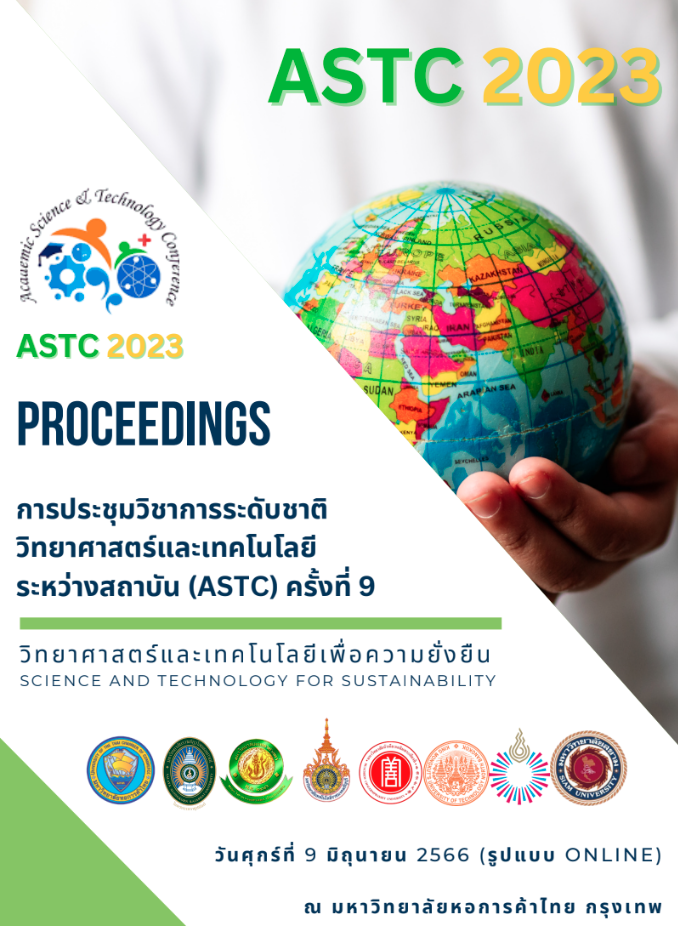
การศึกษาแบคทีเรียที่แยกได้จากน้ำหมักผักสะทอน: การจัดจำแนกเบื้องต้นแบคทีเรียกรดแลคติก (2566)
Title : การศึกษาแบคทีเรียที่แยกได้จากน้ำหมักผักสะทอน: การจัดจำแนกเบื้องต้นแบคทีเรียกรดแลคติก (Study of Bacteria Isolated from Fermented Juice of Millettia utilis Dunn.: Preliminary Identification of Lactic Acid Bacteria)
Researcher : อำพรรณ ชัยกุลเสรีวัฒน์, ญาณิน ทับทิม, จิตตรานนท์ เสือโต, อธิษฐาน เจริญพร และ กาญจนา มหัทธนทวี
ฐานข้อมูลงานวิจัย มหาวิทยาลัยสยาม : https://e-research.siam.edu/kb/study-of-bacteria-isolated/
Link to article: รายงานการประชุม การประชุมวิชาการระดับชาติ วิทยาศาสตร์และเทคโนโลยีระหว่างสถาบัน ครั้งที่ 9 (หน้า 359-366). https://drive.google.com/file/d/1fLQtCaNCm2Jry22a5qPgsGGSesA4NlPW/view?pli=1
Publication: การประชุมวิชาการระดับชาติ วิทยาศาสตร์และเทคโนโลยีระหว่างสถาบัน ครั้งที่ 9 (ASTC2023) / in Proceeding
Citation : อำพรรณ ชัยกุลเสรีวัฒน์, ญาณิน ทับทิม, จิตตรานนท์ เสือโต, อธิษฐาน เจริญพร และ กาญจนา มหัทธนทวี. (2566). การศึกษาแบคทีเรียที่แยกได้จากน้ำหมักผักสะทอน:การจัดจำแนกเบื้องต้นแบคทีเรียกรดแลคติก. ใน รายงานการประชุม การประชุมวิชาการระดับชาติ วิทยาศาสตร์และเทคโนโลยีระหว่างสถาบัน (ASCT)ครั้งที่ 9 (หน้า 359-366). คณะวิทยาศาสตร์และเทคโนโลยี มหาวิทยาลัยหอการค้าไทย.

ผลการใช้สารแคลเซียมคลอไรด์ ร่วมกับสารเคลือบผิว Sucrose Fatty Acid Ester ต่อคุณภาพแคนตาลูปตัดแต่งพันธุ์ซันเลดี้
Title : ผลการใช้สารแคลเซียมคลอไรด์ ร่วมกับสารเคลือบผิว Sucrose Fatty Acid Ester ต่อคุณภาพแคนตาลูปตัดแต่งพันธุ์ซันเลดี้ : Effect of Calcium Chloride Dipping and Sucrose Fatty Acid Ester Coating on the Quality of Fresh Cut Cantaloupe Variety ‘Sun Lady’
Researcher : สมภพ อยู่เอ
Somphop Yoo-a
Department : ภาควิชาเทคโนโลยีการอาหาร คณะวิทยาศาสตร์ มหาวิทยาลัยสยาม
E-mail : somphop.yoo@siam.edu
บทคัดย่อ : การศึกษาผลของการใช้สารละลายแคลเซียมคลอไรด์ ร่วมกับสารเคลือบผิวประเภท sucrose fatty acid ester (Gustec S) ต่อคุณภาพของแคนตาลูปตัดแต่งพันธุ์ซันเลดี้ โดยศึกษาผลของการใช้สารแคลเซียมคลอไรด์ที่ความเข้มข้นร้อยละ 0 0.5 1 1.5 และ 2 จุ่มเป็นเวลา 2 นาที เก็บรักษาที่อุณหภูมิ 5 องศาเซลเซียส พบว่าที่ความเข้มข้นของสารละลายแคลเซียมคลอไรด์ร้อยละ 2 ทําให้เกิดการเปลี่ยนแปลงทางคุณภาพน้อยที่สุดตลอดอายุการเก็บรักษา โดยสามารถเก็บรักษาได้นาน 12 วัน เมื่อจุ่แคนตาลูปตัดแต่งในสารแคลเซียมคลอไรด์ความเข้มข้นร้อยละ 2 ร่วมกับสารเคลือบผิวที่ความเข้มข้นร้อยละ 0 1 2 และ 3 เป็นเวลา 2 นาที เก็บรักษาที่อุณหภูมิ 5 องศาเซลเซียส พบว่า การใช้สารละลายแคลเซียมคลอไรด์ร้อยละ 2 ร่วมกับสารเคลือบผิวที่ความเข้มข้นร้อยละ 3 ชะลอการเปลี่ยนแปลงคุณภาพแคนตาลูปตัดแต่งได้ดีที่สุดและสามารถยืดอายุการเก็บรักษาได้นาน 14 วัน ในขณะที่ชุดควบคุมซึ่งจุ่มในสารละลายแคลเซียมคลอไรด์ร้อยละ 2 เพียงอย่างเดียวมีอายุการเก็บรักษา 12 วัน โดยมีความแตกต่างกับชุดการทดลองอื่นอย่างมีนัยสําคัญ (p<0.05) และจากการทดสอบทางประสาทสัมผัส พบว่า การใช้สารละลายแคลเซียมคลอไรด์ความเข้มข้นร้อยละ 2 ร่วมกับสารเคลือบผิวที่ความเข้มข้นร้อยละ 3 ได้รับการยอมรับจากผู้บริโภคมากที่สุด
คําสําคัญ : แคลเซียมคลอไรด์, แคนตาลูป, อายุการเก็บรักษา, สารเคลือบผิว
Abstract : Effect of Calcium chloride and coating with sucrose fatty acid ester (Gustec S) on quality of cantaloupe fresh cut cv. Sun Lady was investigated. Cantaloupe fresh cut was dipped with calcium chloride concentration 0, 0.5, 1, 1.5 and 2 % during 2 minutes and storage at 5 °C. The result showed that calcium chloride 2 % can reduce changes on the quality of cantaloupe fresh cut and up shelf life to 12 days. The study of calcium chloride 2% and coating Gustec S 0 ,1, 2 and 3 % during 2 minutes then storage at 5 °C. The results show that using calcium chloride 2 % with coating Gustec S 3 % can reduce changing on quality of cantaloupe fresh cut and up shelf life to 14 days. While control treatment (calcium chloride 2%) has shelf life 12 days only. This is significantly different (p< 0.05) and Sensory evaluation tests calcium chloride 2% with coating Gustec S 3% has been accepted maximum by consumer
Keywords : Calcium chloride, Cantaloupe, Shelf life, Sucrose fatty acid ester
Donwload PDF : ผลการใช้สารแคลเซียมคลอไรด์ ร่วมกับสารเคลือบผิว Sucrose Fatty Acid Ester ต่อคุณภาพแคนตาลูปตัดแต่งพันธุ์ซันเลดี้
Proceeding : รายงานการประชุม การประชุมวิชาการระดับชาติ วิทยาศาสตร์และเทคโนโลยีระหว่างสถาบัน ครั้งที่ 2 ASTC 2014: The 2nd Academic Science and Technology Conference 2014 “วิทยาศาสตร์และเทคโนโลยี: การศึกษาคือนวัตกรรมนําพาประเทศชาติสู่ประชาคมเศรษฐกิจอาเซียน” (Innovative Education Challenges the Nation Towards AEC) วันศุกร์ที่ ๒๑ มีนาคม ๒๕๕๗ ณ ณ โรงแรมมิราเคิล แกรนด์ คอนเวนชั่น กรุงเทพมหานคร ผู้จัดหลัก: คณะวิทยาศาสตร์ มหาวิทยาลัยรังสิต
Link to Proceeding: https://www.astcconference.com/page/proceedings#astc-content
Bibliography : สมภพ อยู่เอ. (2557). ผลการใช้สารแคลเซียมคลอไรด์ ร่วมกับสารเคลือบผิว Sucrose Fatty Acid Ester ต่อคุณภาพแคนตาลูปตัดแต่งพันธุ์ซันเลดี้. ใน รายงานการประชุม การประชุมวิชาการระดับชาติ วิทยาศาสตร์และเทคโนโลยีระหว่างสถาบัน ครั้งที่ 2 “วิทยาศาสตร์และเทคโนโลยี: การศึกษาคือนวัตกรรมนําพาประเทศชาติสู่ประชาคมเศรษฐกิจอาเซียน” (หน้า 232-241). ปทุมธานี: มหาวิทยาลัยรังสิต.